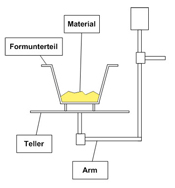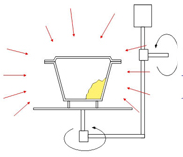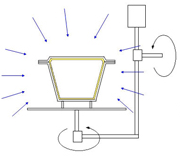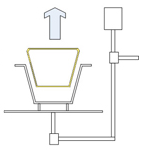The rotational sintering process (also known as rotational melting, rotational molding or rotomolding) is a shaping manufacturing process for the production of hollow plastic parts. It is one of the primary molding processes in the field of plastics processing.
Every plastic product requires its own mold. These are usually made of aluminum or sheet steel and consist of two or more molded parts, depending on the complexity of the plastic product.
Sequence of the rotational sintering process
1. filling
If required, the inserts (nuts, mounting plates or other parts to be rotated) are first placed in position in the open mold. A precisely dosed quantity of plastic powder is then filled in. Frequently used materials are polyethylene (PE), polypropylene (PP), polyamide (PA) or special engineering plastics.

2. heating
The closed mold is placed in an oven, slowly rotated around two axes (biaxially) and heated to around 180 to 300°C. Now the plastic slowly begins to melt on the hot mold walls and spreads evenly on the inside walls of the mold.

3. cooling
After the powder has completely melted, the mold is cooled while continuing to rotate – usually by air or water cooling. Cooling takes place slowly in order to avoid stresses and deformations.

4. demolding
The mold is opened and the finished hollow part is removed. It still has a temperature of around 70°C at this point.
In order to ensure the dimensional accuracy of the hollow body parts, they are then often placed in a cooling device until they have cooled down completely and, if necessary, exposed to supporting air.
Finally, the mold is cleaned of any plastic residue.



